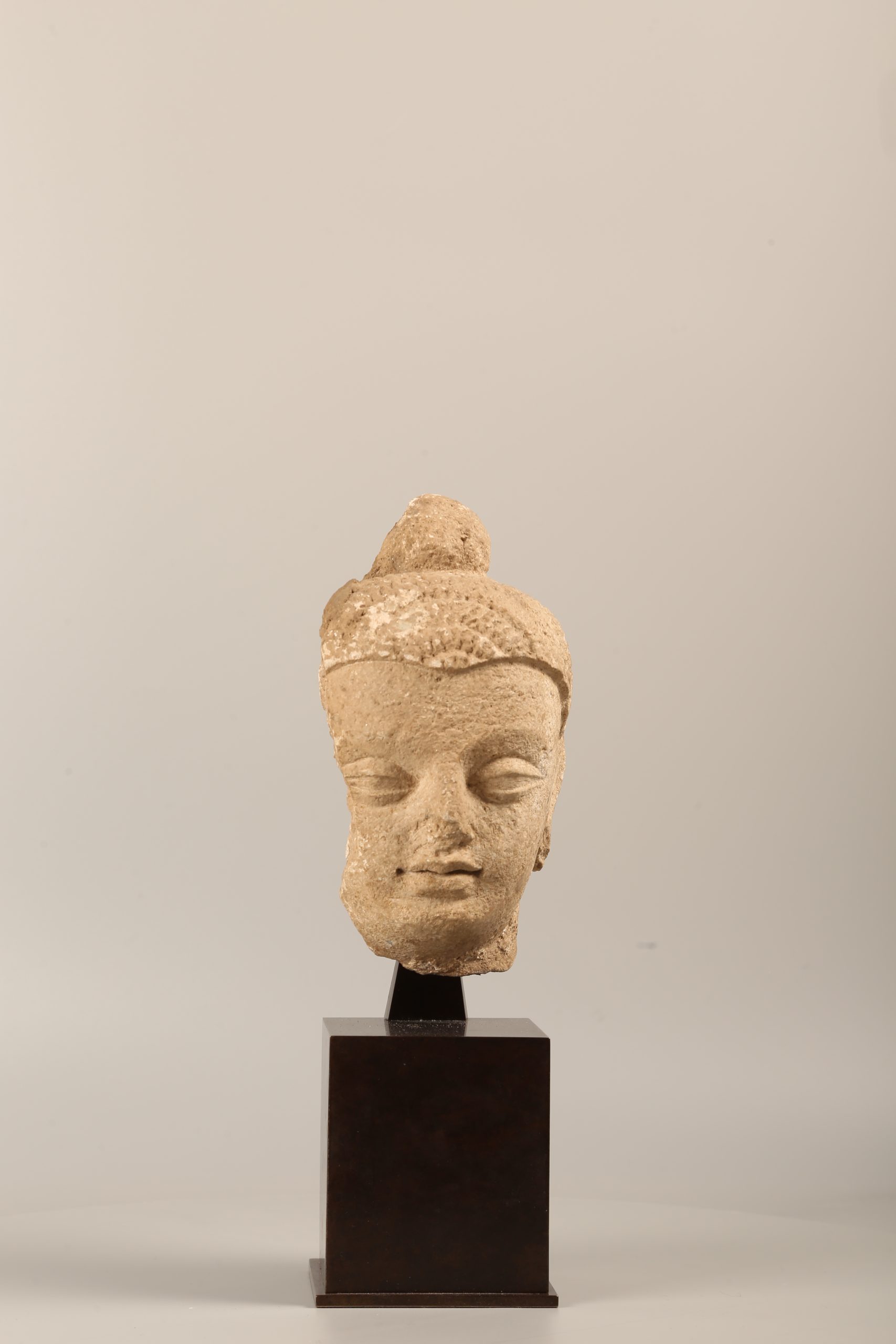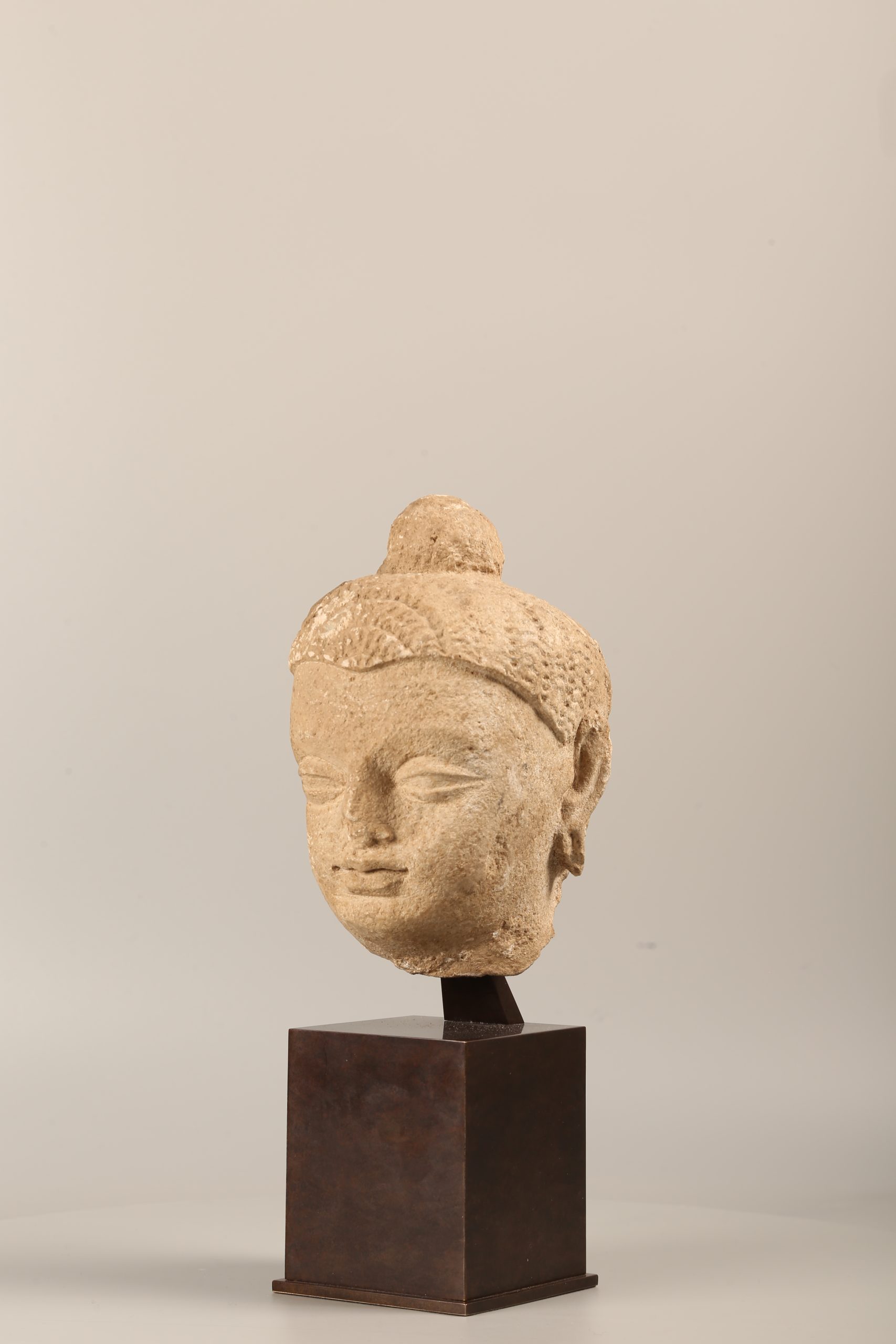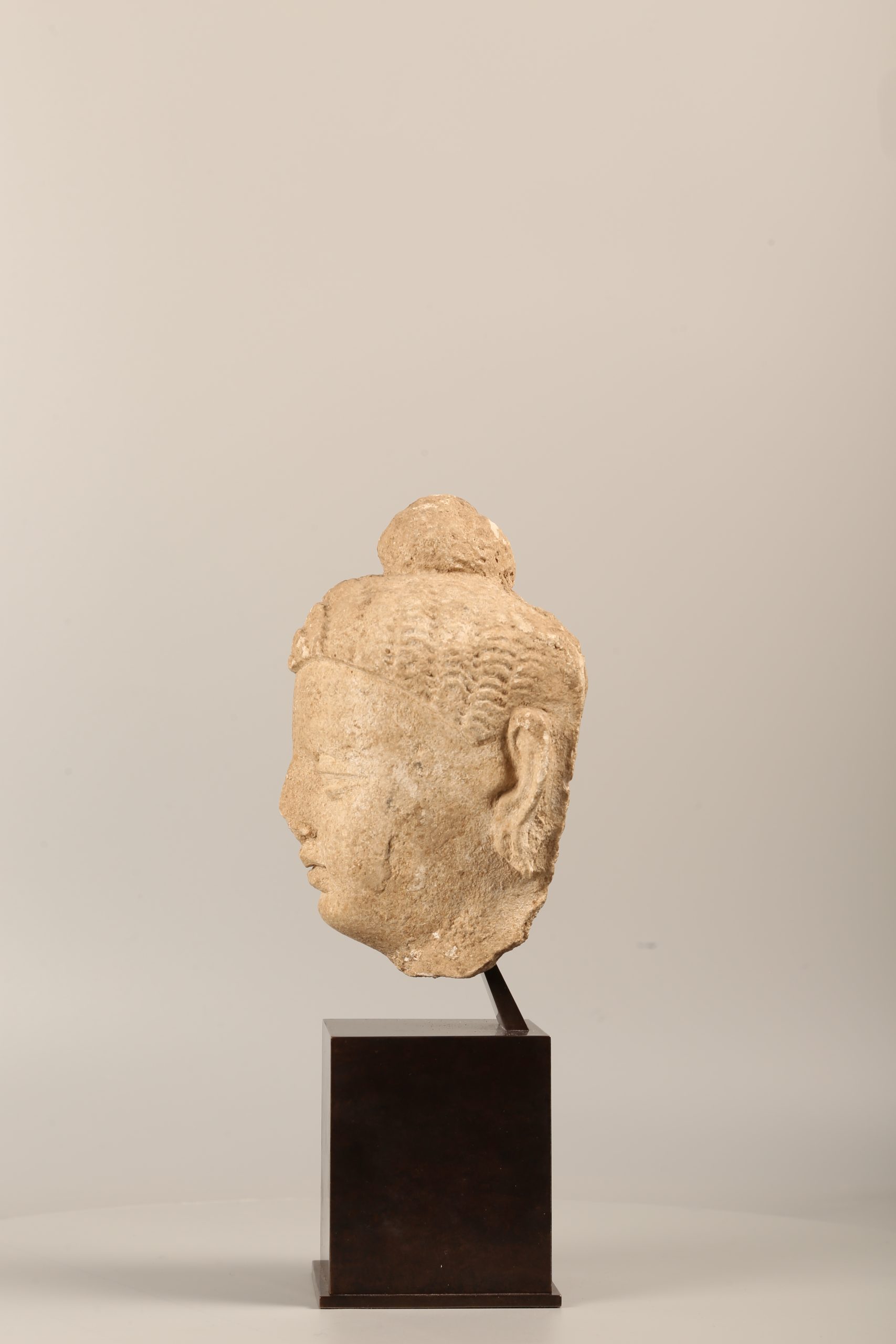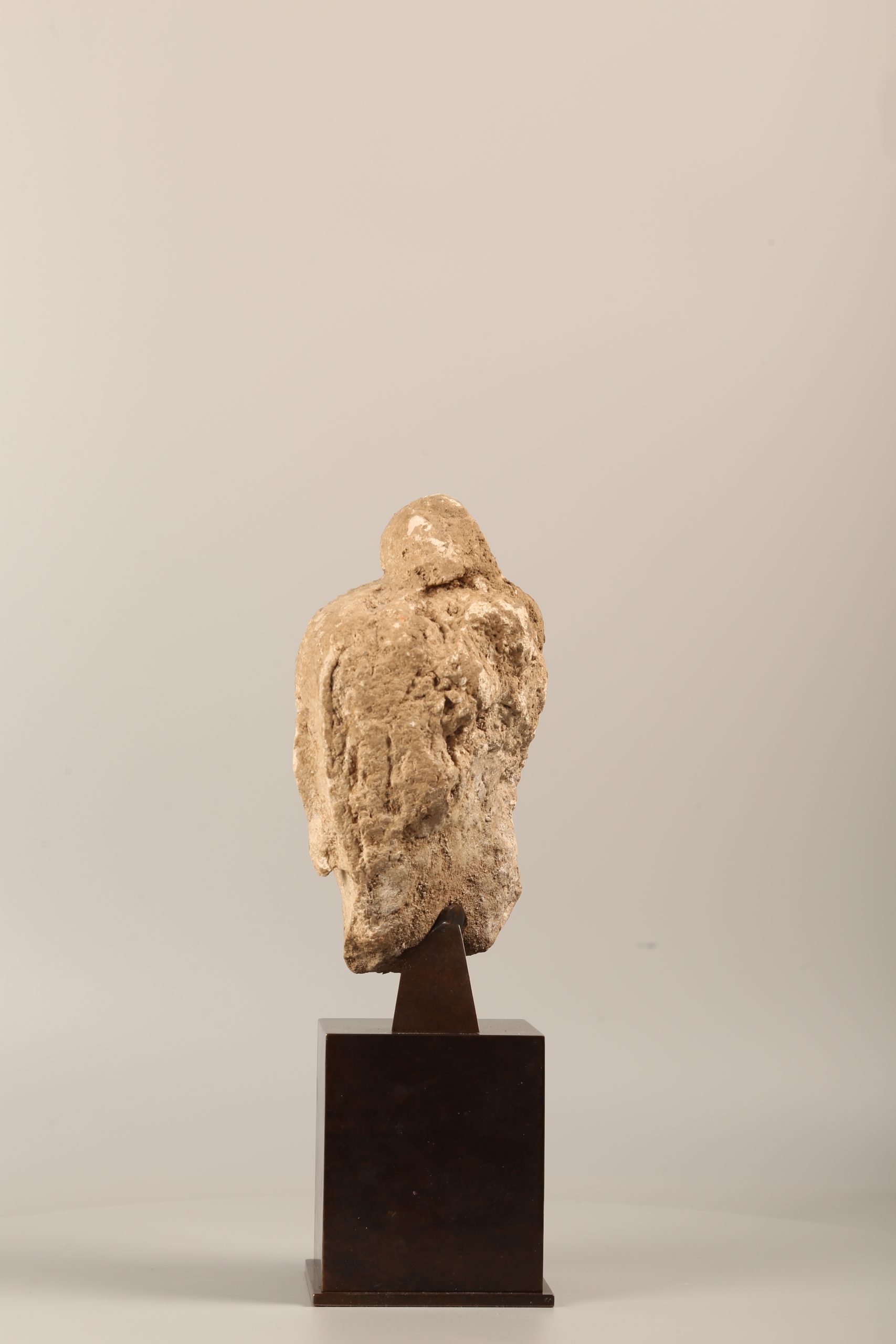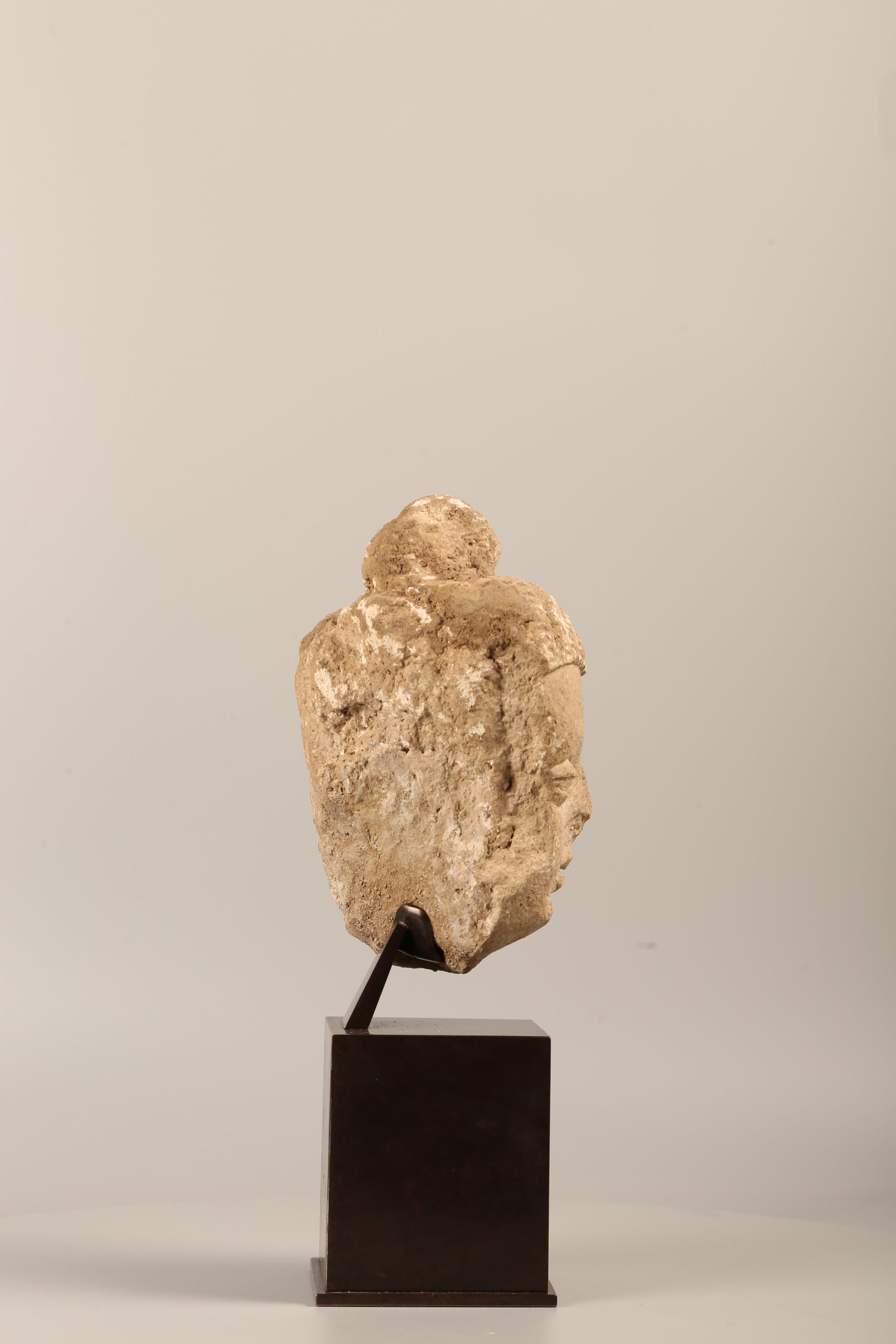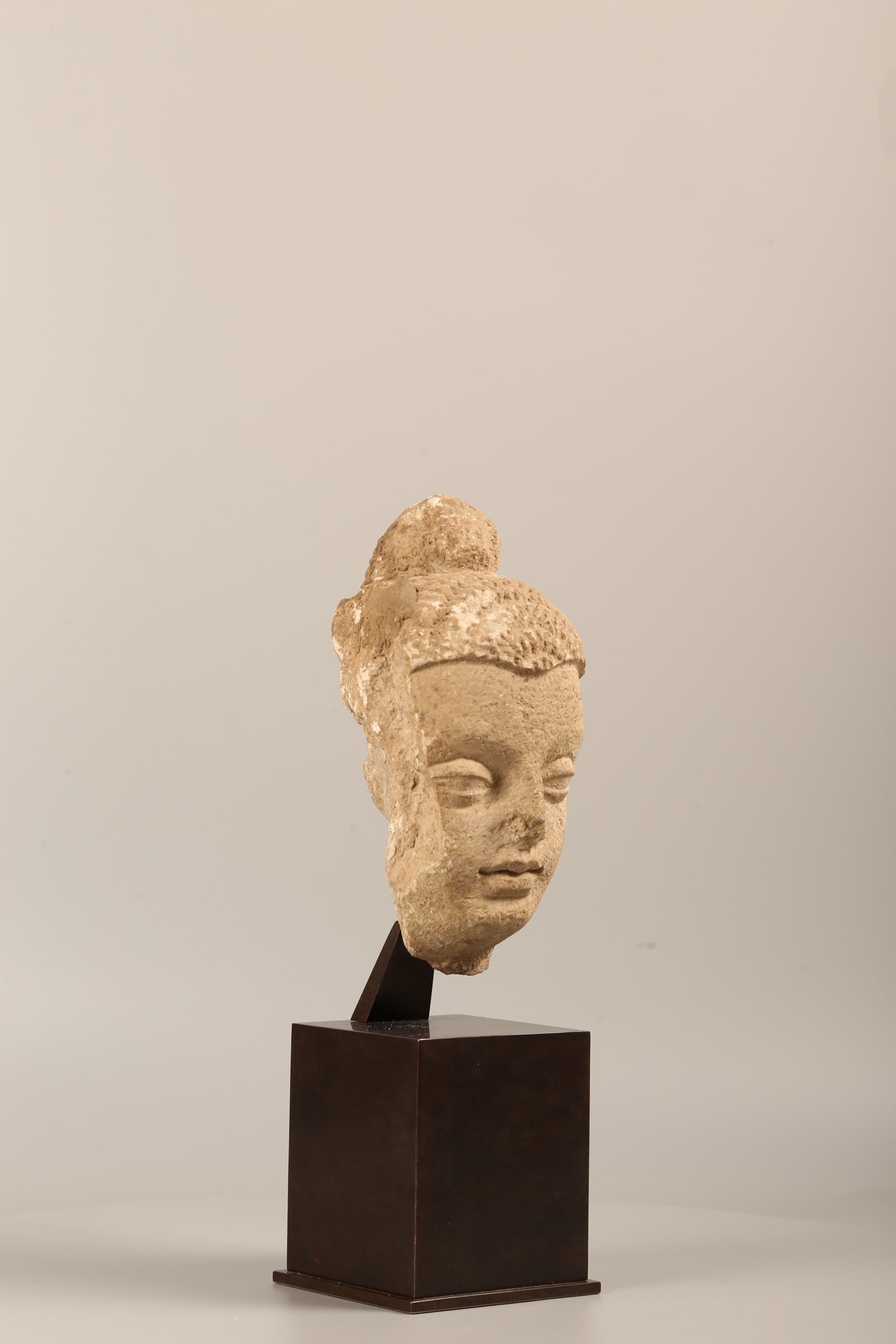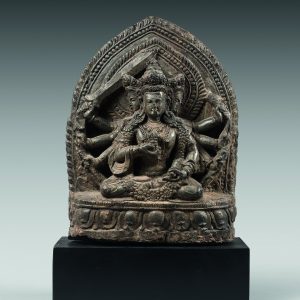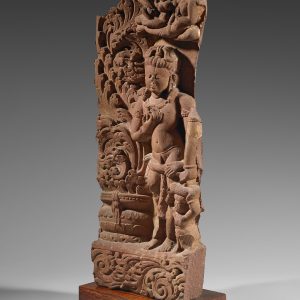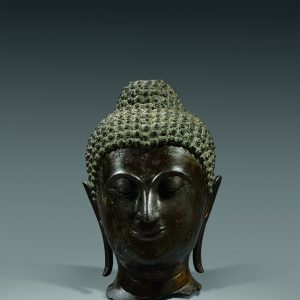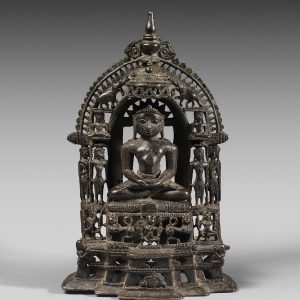Buddha head
Stucco
Ancient region of Gandhāra
4th-5th century
H. 17 cm or 6 ⅞ in
Description
This Buddha from Gandhāra is a very touching artwork with a delicate expression and holds our attention. Made of stucco and measuring 17 cm high (or 6 ⅞ in), this head can be dated to the 4th-5th centuries AD and evokes the Buddha figures at the Jaulian monastery in Taxila. Although fragmentary, this face shows nevertheless a great classicism, illustrating the fascinating “Greco-Buddhist art” of Gandhāra.
The ethereal idealization of this head further emphasizes the Buddha’s main physical character: at the top of the skull, the protrusion of the fontanel (uṣṇīṣa) is the auspicious mark (lakṣaṇa) which symbolizes the wisdom of the Blessed One and indicates that he is a remarkable being. In Gandhāran art, the cranial protuberance appears hidden by strands of wavy hair arranged in the manner of a bun. His half-closed eyes reflect the intensity of his meditation, while his mouth sketches a gentle smile that testifies to the Buddha’s serene compassion for all beings. The pierced ear, distended from wearing heavy earrings, indicates his former princehood of the Blessed One.
Used in Gandhāra, as at the Taxila site, stucco was also employed masterfully. Statues were cast in molds and the resulting forms were then finished with a spatula. This technique allows a great plasticity in the treatment and to obtain, as here, faces with a smooth modelling. The mouth, with its particularly sensitive carving, is a fine example. Often the finest stucco heads were fired separately and attached to the bodies with slurry. This Buddha head must have been part of the decoration of the external courtyards of the monasteries, those accessible to the devotees. A thin engobe – still visible in the incisions of the hair – covered it all, hiding any disparities and lending it a rich polychromy.
Provenance: Private collection, UK, since 1963, by repute.

